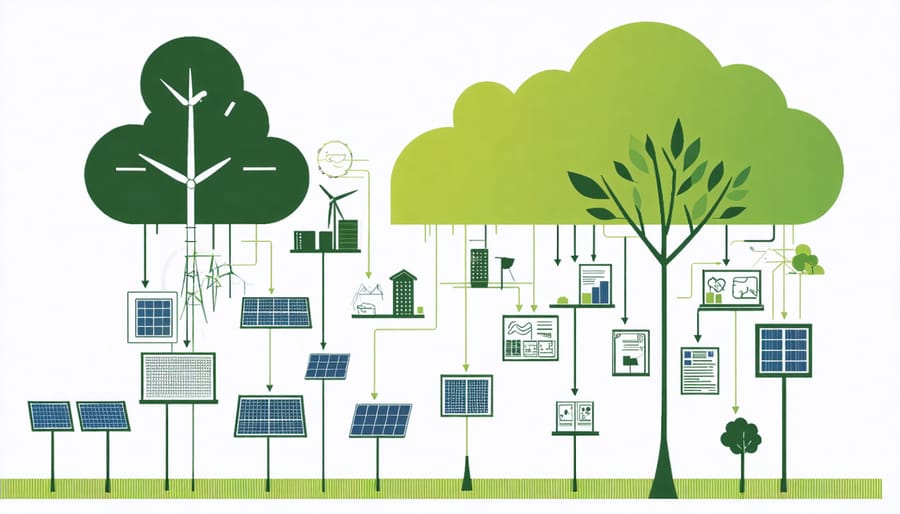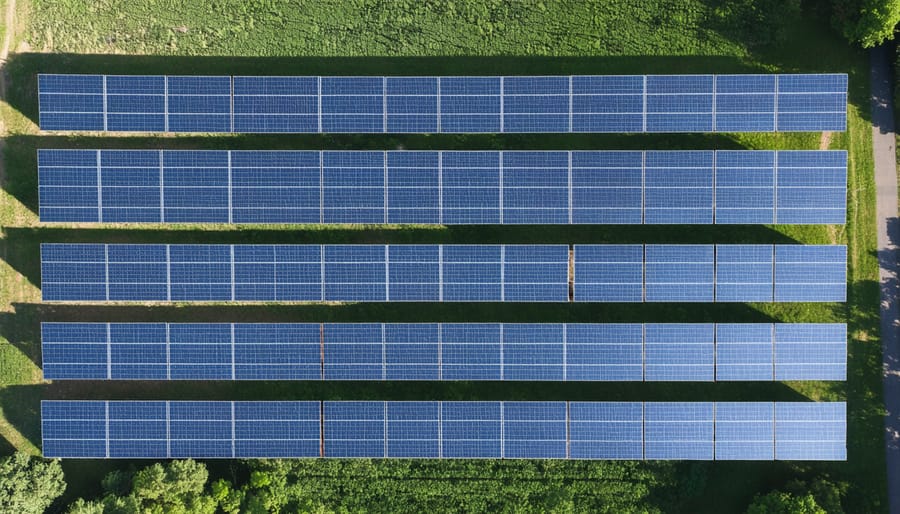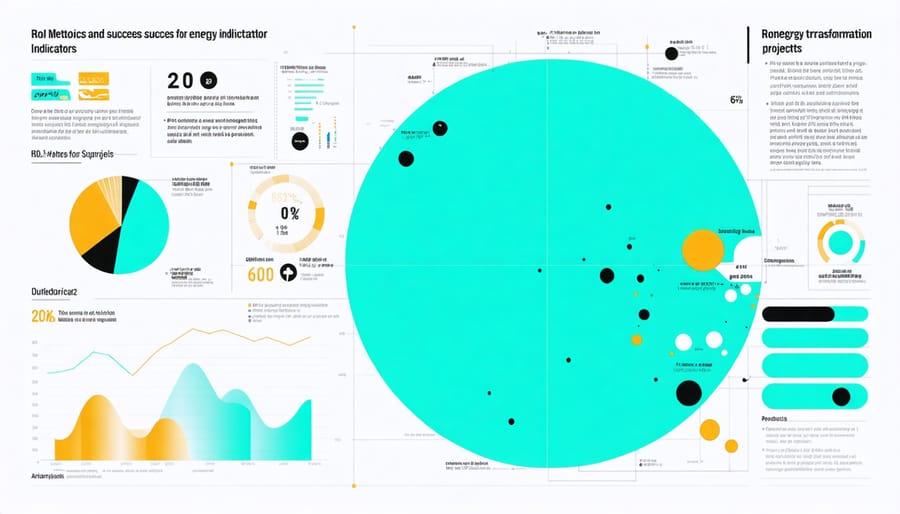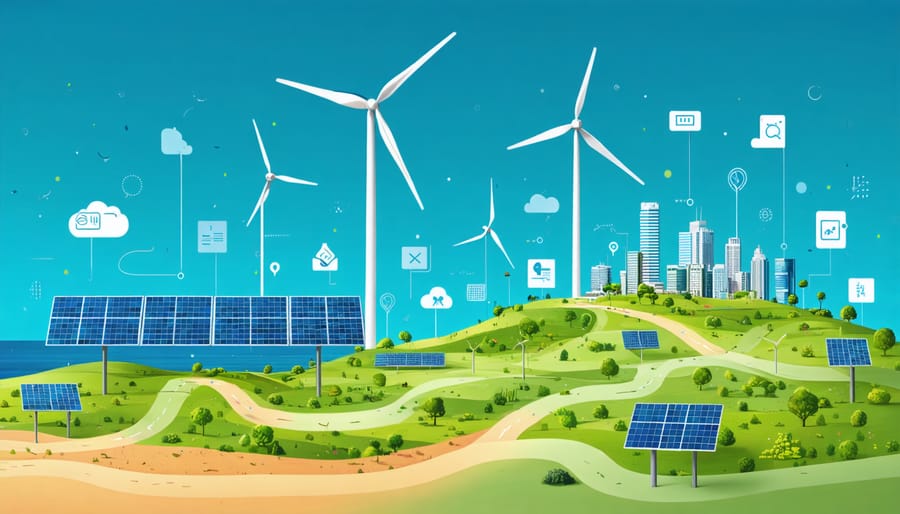Transforming Australia’s energy landscape demands innovative financial solutions that bridge the gap between ambitious sustainability goals and practical implementation. The emergence of 4.f energy transformation mechanisms represents a groundbreaking shift in how we fund, develop, and scale renewable energy projects across the continent. By combining traditional investment structures with forward-thinking financial instruments, these mechanisms are revolutionizing the way organizations access capital for clean energy initiatives.
From solar farms in the outback to wind projects along our coastlines, 4.f energy transformations are unlocking unprecedented opportunities for businesses, communities, and government entities to accelerate their transition to sustainable energy solutions. This innovative funding approach addresses the critical challenge of upfront costs while ensuring long-term economic viability and environmental benefits.
Industry leaders are already leveraging these mechanisms to transform their energy infrastructure, achieving remarkable returns on investment while significantly reducing their carbon footprint. The flexibility and scalability of 4.f transformations make them particularly valuable for the Australian market, where diverse geographical conditions and varying energy needs require adaptable financing solutions.
As we stand at the crossroads of traditional energy systems and a sustainable future, understanding and utilizing 4.f energy transformations has become essential for organizations committed to leading the renewable energy revolution. This strategic approach not only facilitates the adoption of clean energy technologies but also creates a robust framework for sustainable economic growth and environmental stewardship.
The Financial Backbone of Energy Transformation

Traditional vs. Innovative Funding Models
The energy sector’s financial landscape is evolving rapidly, with traditional funding methods making way for innovative financing models that better suit renewable energy projects. While conventional approaches like bank loans and government grants remain important, they often struggle to address the unique characteristics of renewable energy investments.
Traditional funding typically requires substantial collateral, lengthy approval processes, and rigid repayment structures. These models, designed for conventional energy infrastructure, sometimes fail to account for the different risk profiles and revenue patterns of renewable projects. In contrast, newer financing approaches embrace flexibility and innovation, offering solutions tailored to clean energy initiatives.
Modern funding mechanisms include green bonds, peer-to-peer lending platforms, and community investment schemes. These alternatives often feature more favorable terms for renewable projects, such as grace periods aligned with construction timelines and repayment schedules that match energy production patterns. In Australia, success stories like the Clean Energy Finance Corporation demonstrate how blended finance can accelerate the transition to sustainable energy.
Power purchase agreements (PPAs) and energy-as-a-service models are gaining traction, allowing projects to secure long-term revenue streams while providing investors with stable returns. These arrangements help overcome initial cost barriers and create win-win scenarios for both developers and energy consumers, making renewable energy projects more attractive to a broader range of investors.
Government Incentives and Support Programs
Australia’s commitment to energy transformation is backed by robust government support programs at both federal and state levels. The Clean Energy Finance Corporation (CEFC) leads the charge with its $10 billion investment fund, offering smart finance solutions for renewable energy projects across the country.
The Renewable Energy Target (RET) scheme continues to drive investment through Large-scale Generation Certificates (LGCs) and Small-scale Technology Certificates (STCs), making renewable energy projects more financially viable. States like Victoria and South Australia have introduced their own ambitious targets, supported by generous rebates and grants for businesses and households.
Queensland’s Renewable Energy and Hydrogen Jobs Fund offers $2 billion in support, while New South Wales’ Electricity Infrastructure Roadmap provides investment certainty through Long-term Energy Service Agreements (LESAs). Western Australia’s Clean Energy Future Fund demonstrates the nationwide commitment to sustainable energy transformation.
Local councils are also stepping up with innovative programs like Environmental Upgrade Finance (EUF), helping building owners access competitive financing for energy upgrades. The Australian Renewable Energy Agency (ARENA) complements these initiatives by funding research and development, ensuring Australia remains at the forefront of energy innovation.
These support mechanisms create a comprehensive ecosystem that makes renewable energy projects not just environmentally sound but financially attractive for businesses and communities across Australia.
Strategic Energy Transition Alliances
Public-Private Partnerships
Australia’s journey towards energy transformation has been significantly accelerated through successful public-private partnerships (PPPs), creating a blueprint for future collaborations. The Western Australian Solar Schools Program stands as a shining example, where government funding combined with private sector expertise has enabled over 200 schools to transition to solar power, reducing both emissions and operating costs.
The Victorian Renewable Energy Target (VRET) auction scheme demonstrates how government initiatives can effectively mobilize private investment. This program has attracted over $1.6 billion in private investment, creating thousands of jobs while advancing the state’s renewable energy goals. The framework allows private companies to bid for long-term contracts to build new renewable energy projects, providing certainty for investors while ensuring competitive pricing for consumers.
The Clean Energy Finance Corporation (CEFC) has pioneered innovative partnership models, working with private banks to provide green loans for sustainable projects. Their co-financing arrangements have unlocked additional private capital, making renewable energy projects more accessible to businesses and communities across the country.
Recent success stories include the Kidston Pumped Storage Hydro Project in Queensland, where public funding catalyzed private investment to create Australia’s first pumped hydro facility combined with a solar farm. This project showcases how strategic government support can enable transformative energy projects that might otherwise be too risky for private investment alone.
These partnerships have established proven frameworks for risk-sharing, project delivery, and community benefit-sharing, creating a robust foundation for future energy transformation initiatives.

Community Energy Projects
Across Australia, community energy initiatives are revolutionizing how neighborhoods power themselves. These grassroots projects demonstrate the power of collective action in driving energy transformation at the local level. From solar gardens in regional Victoria to wind farms in South Australia, communities are taking control of their energy future through innovative funding models.
The cooperative funding approach has gained significant traction, with local residents pooling resources to invest in shared renewable energy infrastructure. For example, the Hepburn Wind Farm in Victoria, Australia’s first community-owned wind farm, was funded by over 2,000 members who raised $13.5 million through a combination of shares and government grants.
Many communities are now exploring hybrid funding models that combine traditional financing with crowdfunding platforms. These models allow residents to invest amounts as small as $100, making renewable energy projects more accessible to everyone. Local councils are also playing a crucial role by providing seed funding and facilitating partnerships between community groups and energy providers.
The success of these projects often hinges on strong community engagement and transparent governance structures. Regular community meetings, clear communication channels, and democratic decision-making processes ensure that all stakeholders have a voice in project development. This collaborative approach not only generates clean energy but also creates local jobs and keeps energy profits within the community, demonstrating that sustainable energy transformation can deliver both environmental and economic benefits.
Making Energy Transformation Work
Risk Management Strategies
Managing financial risks in energy transformation projects requires a well-planned, multi-faceted approach. Smart investors and project developers in Australia are increasingly adopting portfolio diversification strategies, spreading investments across various renewable technologies and geographical locations to minimize exposure to specific market risks.
Insurance products tailored for renewable energy projects have become valuable tools for risk mitigation. These include performance guarantee insurance, which protects against underperforming equipment, and weather-related coverage for solar and wind projects. Many successful Australian projects have demonstrated that combining different insurance products creates a robust safety net.
Power Purchase Agreements (PPAs) have emerged as a crucial risk management tool, providing revenue certainty and helping secure project financing. Leading Australian corporations are signing long-term PPAs with renewable energy providers, creating win-win situations for both parties.
Government support mechanisms, such as renewable energy certificates and feed-in tariffs, help stabilize revenue streams. However, savvy project developers don’t rely solely on these mechanisms; they create comprehensive risk management plans that include operational efficiency measures and regular equipment maintenance schedules.
Community engagement has proven to be an effective risk mitigation strategy. Projects that actively involve local communities through benefit-sharing schemes and transparent communication typically face fewer delays and enjoy stronger social license to operate, reducing project risks significantly.
Regular monitoring and adaptation of risk management strategies ensure projects remain resilient to changing market conditions and regulatory environments.
Success Metrics and ROI
Measuring the success of energy transformation projects requires a comprehensive approach that considers both environmental and financial outcomes. Key performance indicators (KPIs) typically include reduction in carbon emissions, energy cost savings, and return on investment (ROI) calculations.
For Australian organizations implementing energy transformation initiatives, successful projects often show a 20-30% reduction in energy costs within the first year. The ROI generally ranges from 15-25% annually, with payback periods averaging 3-5 years for most renewable energy installations.
Notable metrics to track include:
– Kilowatt-hours (kWh) generated from renewable sources
– Reduction in grid electricity consumption
– Carbon emissions avoided
– Monthly cost savings
– System efficiency rates
– Energy independence ratio
Success stories from across Australia demonstrate impressive results. The Adelaide Solar City project, for example, achieved a 178% ROI over five years while reducing carbon emissions by 23,000 tonnes. Similarly, regional businesses implementing solar-plus-storage solutions report average energy cost reductions of 40-60%.
To effectively measure project success, organizations should:
– Establish baseline measurements before implementation
– Use smart monitoring systems for real-time data collection
– Conduct quarterly performance reviews
– Compare results against industry benchmarks
– Document both direct and indirect benefits
Remember that success extends beyond financial returns. Enhanced brand reputation, improved environmental compliance, and increased property values are significant additional benefits that contribute to the overall ROI of energy transformation projects.

Future-Proofing Investments
In today’s rapidly evolving energy landscape, future-proofing investments is crucial for long-term success. Smart investors are adopting flexible approaches that allow projects to adapt to emerging technologies and changing market conditions. One key strategy is investing in modular infrastructure that can be scaled or modified as needs change, rather than committing to rigid, single-purpose installations.
Successful future-proofing also relies heavily on digital collaboration in energy projects, which enables real-time monitoring and adaptive management of resources. This approach has proven particularly effective in Australian renewable energy projects, where remote monitoring and predictive maintenance have significantly improved operational efficiency.
Diversification remains a cornerstone of risk management. Forward-thinking organizations are creating portfolios that combine multiple renewable energy sources, storage solutions, and smart grid technologies. This strategy helps buffer against technological obsolescence and market fluctuations while maximizing opportunities for growth.
Investment in workforce development is equally important. Companies are establishing training programs to ensure their teams can operate and maintain evolving energy systems. This human capital investment is particularly crucial in regional areas, where skilled workers are essential for project sustainability.
To maintain competitive advantage, successful projects incorporate regular technology assessments and upgrade pathways into their initial planning. This includes establishing partnerships with research institutions and technology providers to stay ahead of innovations and ensure smooth integration of new solutions as they become available.
As we’ve explored throughout this article, energy transformations represent a pivotal opportunity for Australia’s sustainable future. The transition to cleaner, more efficient energy systems isn’t just an environmental imperative – it’s a pathway to economic growth and energy security for our nation.
The success stories we’ve shared demonstrate that with the right financial mechanisms, strategic partnerships, and community engagement, transformative energy projects are not only possible but profitable. From solar farms in Queensland to bioenergy facilities in Victoria, these initiatives are creating jobs, reducing emissions, and building resilient communities.
The time for action is now. For industry professionals, we encourage you to explore the various funding options available and consider how your organization can participate in this energy revolution. Policymakers have a crucial role in creating supportive frameworks that accelerate clean energy adoption and ensure equitable access to sustainable solutions.
For communities and individuals, your voice and choices matter. Whether it’s supporting local renewable energy projects, advocating for clean energy policies, or implementing energy-efficient practices in your daily life, every action contributes to our collective transformation.
Looking ahead, Australia has the potential to become a global leader in renewable energy innovation and implementation. By leveraging our natural resources, technical expertise, and innovative spirit, we can create a future where clean, affordable energy is accessible to all.
Let’s work together to turn these opportunities into reality. The path to energy transformation is clear – it’s time to take the next step forward, mate. Our future generations are counting on the decisions and actions we take today.

